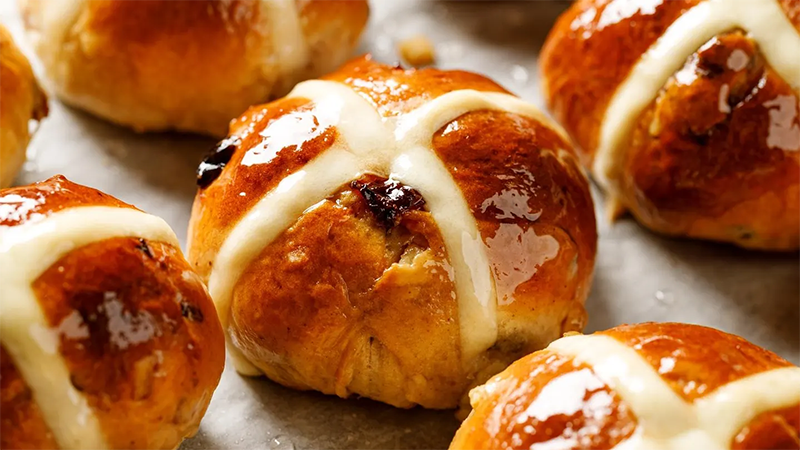
Many still skip meat on Good Friday—but the food traditions go far beyond that. Here’s how five countries turn this quiet holiday into something meaningful at the table.
Good Friday is widely recognized—even by those who don’t observe it. For some, it’s simply the Friday before Easter. For others, particularly within Christian traditions, it’s a solemn day of reflection tied to the crucifixion of Jesus, believed to have taken place on this day according to biblical accounts.
The day’s cultural footprint often stretches beyond the church. It’s not a federal holiday in the U.S., but it still prompts annual questions: Are banks open? Can I eat meat today? What do people eat—and why?
In many Christian denominations—including Roman Catholic, Anglican, Lutheran, and Eastern Orthodox churches—Good Friday is traditionally marked by pared-down meals, fasting, and a general sense of stillness. For those who observe it, that often means skipping meat and sitting down to simpler dishes.
But even in largely secular households, the food traditions tied to Good Friday can linger—quiet, nostalgic, and deeply regional. From pickled fish in South Africa to hot cross buns in the U.K., here’s how five countries bring meaning to the table on this quietly enduring day.
Good Friday in Medieval Times
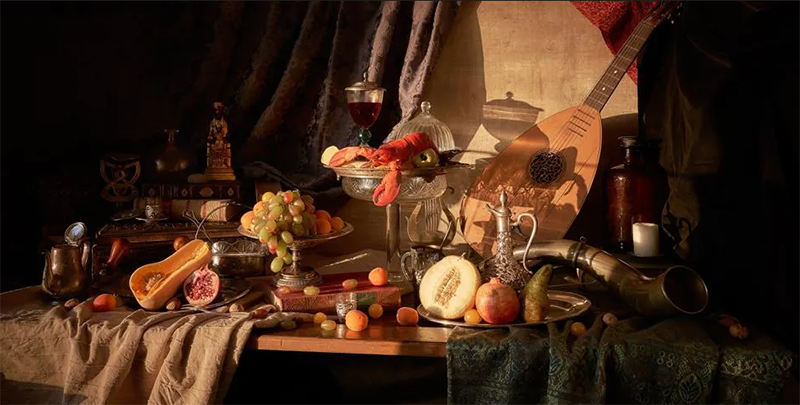
In medieval Europe, Good Friday meals reflected both faith and survival—meatless dishes made from fish, legumes, and preserved foods marked the season’s scarcity and restraint.
Historically, Good Friday has been associated with fasting and restraint—not just in spirit, but on the plate. In medieval Europe, these limitations shaped entire culinary traditions, emphasizing meatless meals made with fish, legumes, and preserved or pickled ingredients. As Yale University Press explains, these customs were not only religious in origin but also tied to seasonal rhythms and scarcity, especially in regions where Lent overlapped with the final stretch of winter.
Over time, many of those traditions evolved, regionalized, and—perhaps most notably—became cultural markers that persisted long after religious observance faded. Today, you can see echoes of those same values in the dishes that still appear on Good Friday tables around the world.
South Africa – Pickled Fish
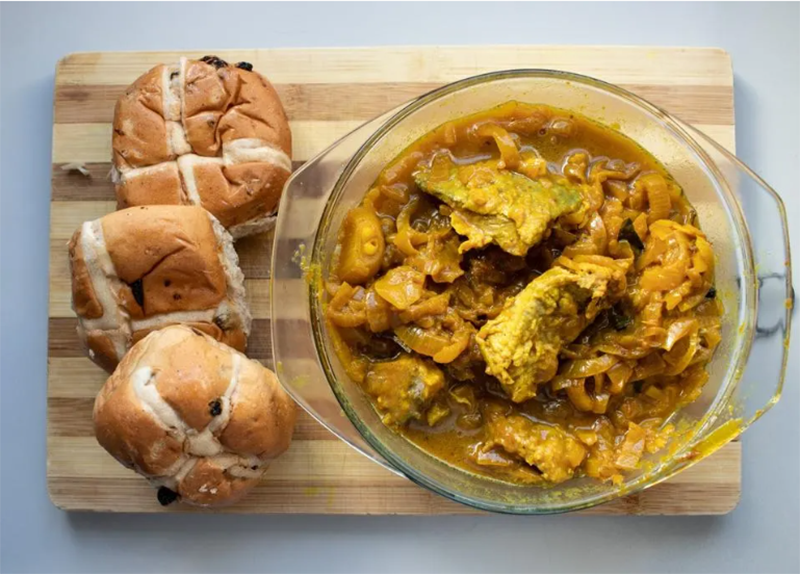
a serving of hot cross buns and pickled fish which is a traditional meal enjoyed at easter in the cape culture of south africa. A Cape Town staple, pickled fish blends sweet, sour, and spiced flavors—a dish rooted in preservation, history, and Cape Malay tradition.
In Cape Town and coastal communities, pickled fish is a beloved Good Friday staple. Made by marinating fried white fish in a spiced vinegar sauce with onions and curry, it’s tangy, sweet, and sour all at once. The dish has Cape Malay roots and speaks to both preservation and celebration.
Italy – Zuppa di Pesce (Fish Stew)
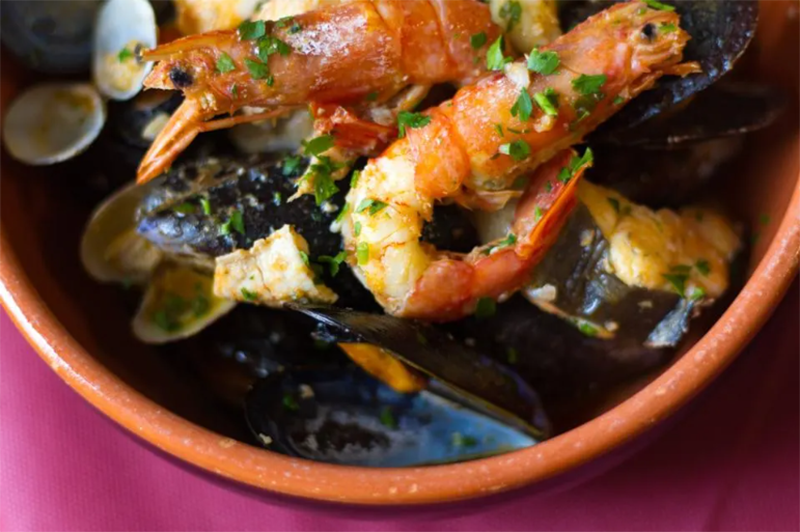
Italy’s Good Friday tables often feature zuppa di pesce, a rustic fish stew that reflects both religious abstinence and regional abundance.
Italian households often skip the meat and serve zuppa di pesce, a rustic fish stew made with tomatoes, garlic, and shellfish or white fish. In coastal regions, it’s a centerpiece of the La Vigilia tradition, which also includes pasta dishes with anchovies or sardines.
Argentina – Empanada Gallega

In Argentina, empanada gallega—a tuna-filled pie with Spanish roots—is a Good Friday staple, honoring Catholic tradition with flaky, meatless comfort.
In Argentina, empanada gallega—a savory pie typically filled with tuna, onions, and bell peppers—is a traditional Good Friday dish, especially among Catholic families. This Galician-influenced preparation is often made with puff pastry or bread dough and served either warm or at room temperature. Some versions are dusted with powdered sugar, creating a sweet-savory contrast that reflects both Spanish culinary roots and local adaptation.
Germany – Herring in Cream Sauce with Potatoes
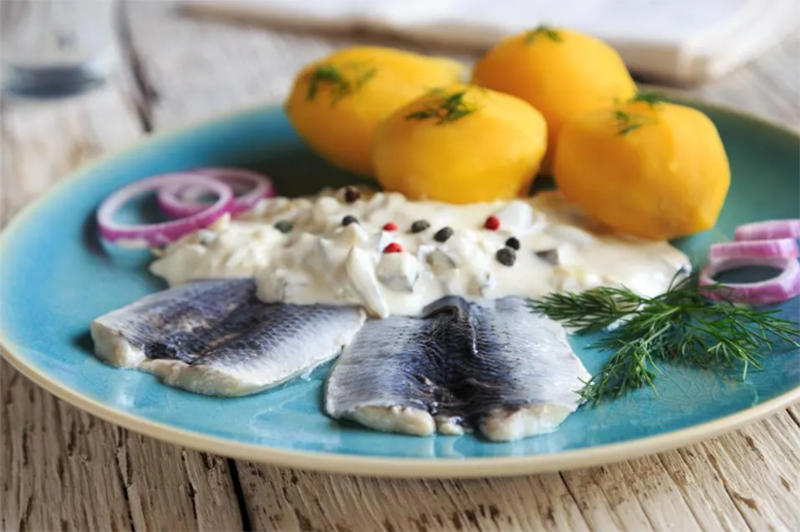
A northern German favorite for Good Friday, pickled herring in cream sauce with boiled potatoes keeps the meal humble, briny, and Lenten-friendly.
In parts of Germany, pickled herring served in a cream sauce with boiled potatoes is a common meal for Good Friday. It’s a dish tied as much to Lenten abstinence as to practical, everyday fare—light, cold, and simple to prepare. While it’s also considered a go-to hangover remedy, its presence on Good Friday tables reflects the tradition of fish-focused meals that avoid richness or indulgence.
United Kingdom – Hot Cross Buns
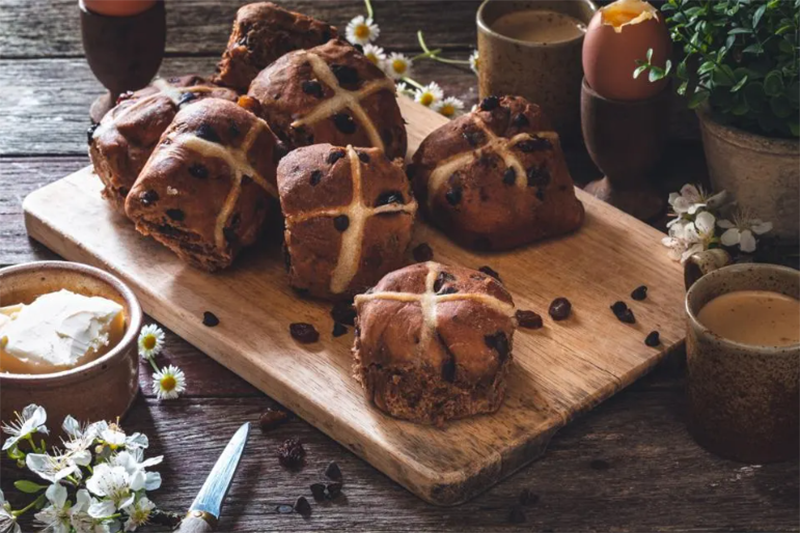
Soft, spiced, and marked with a cross, hot cross buns were once reserved for Good Friday alone. Today, they remain one of the most iconic Easter season foods.
Perhaps the most iconic Good Friday treat, hot cross buns are spiced sweet rolls studded with raisins or currants and marked with a cross in whitre icing on top. Though they’re now eaten throughout Lent, they were once reserved for Good Friday alone—meant to symbolize sacrifice and shared comfort.
However people choose to observe (or not observe) Good Friday, the foods that show up on this day tell a bigger story. They connect people across time and place—not just through belief but through memory, habit, and what gets passed down.





